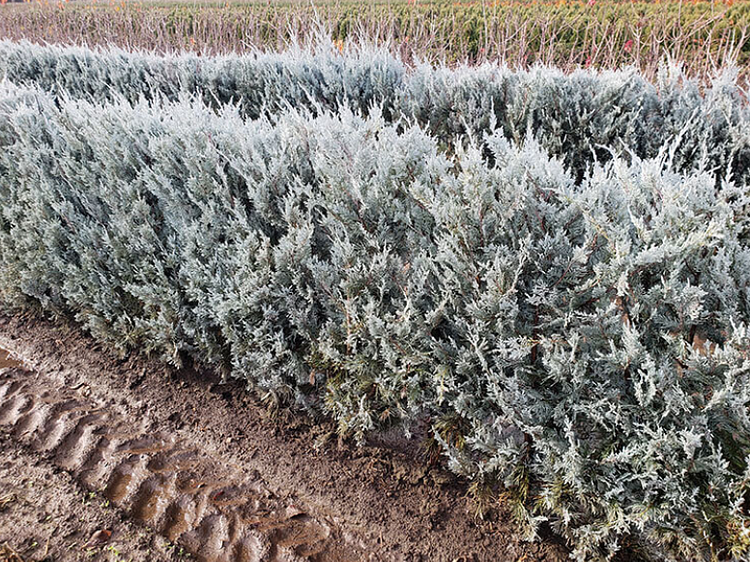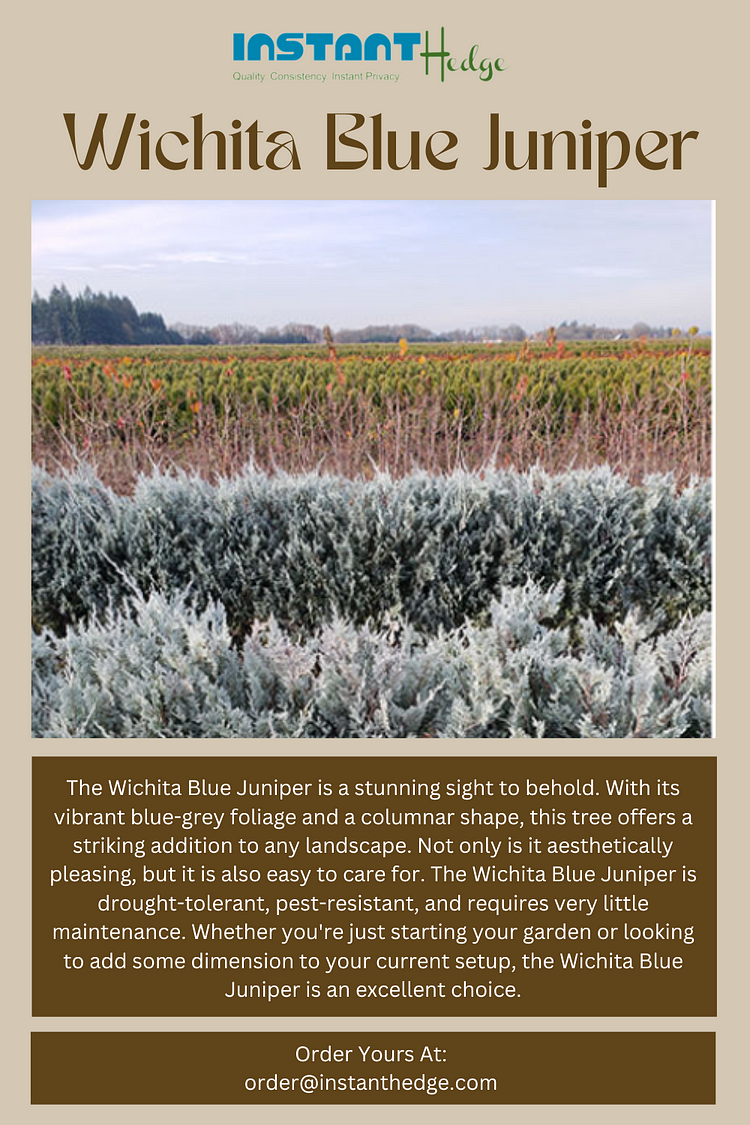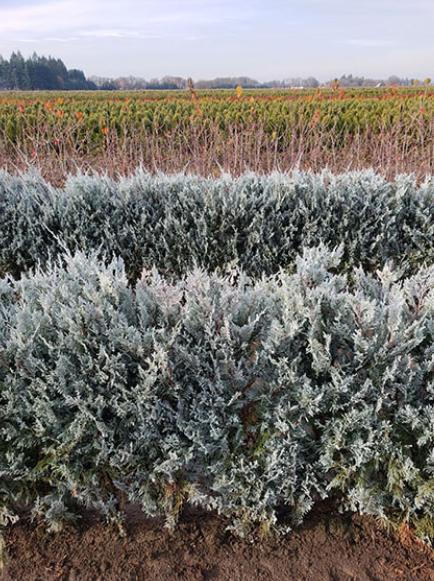Embracing Tranquility: The Beauty of Wichita Blue Juniper in Landscape Design
Wichita Blue Juniper, scientifically known as Juniperus scopulorum ‘Wichita Blue,’ is a stunning evergreen shrub prized for its unique powder-blue foliage and versatile use in landscape design.
This striking cultivar of Rocky Mountain Juniper is cherished by gardeners and landscapers alike for its ability to add color, texture, and visual interest to any outdoor space.
Let’s delve into the captivating characteristics and landscape benefits of the Wichita Blue Juniper.

Standing out with its distinctive powder-blue foliage, the Wichita Blue Juniper serves as a focal point in any garden setting. Its needle-like leaves maintain their vibrant blue hue throughout the year, providing a refreshing contrast to traditional green foliage. Whether used as a solitary specimen, planted in mass for ground cover, or trained into formal hedges, this juniper cultivar adds a touch of elegance and serenity to gardens of all styles.
One of the key advantages of the Wichita Blue Juniper is its adaptability to various growing conditions. This hardy shrub thrives in full sun to partial shade and well-draining soil, making it suitable for a wide range of climates and landscapes. Its tolerance to drought and poor soil quality further enhances its versatility, allowing it to thrive in urban gardens, coastal landscapes, and xeriscape designs.
In addition to its aesthetic appeal, the Wichita Blue Juniper offers practical benefits for landscape design. Its dense, compact growth habit makes it an excellent choice for creating low-maintenance hedges, borders, and windbreaks.

When planted en masse, its spreading form provides effective ground cover, suppressing weed growth and preventing soil erosion. Its evergreen foliage also offers year-round privacy and screening, making it an ideal choice for creating secluded outdoor retreats.
When it comes to care and maintenance, the Wichita Blue Juniper is relatively easy to grow, requiring minimal attention to thrive. Once established, it is drought-tolerant and low-maintenance, requiring only occasional watering during dry spells and annual pruning to maintain its shape. To promote healthy growth and vigor, plant Wichita Blue Junipers in well-draining soil and avoid overwatering, as excessive moisture can lead to root rot and other fungal diseases.
With its striking color, versatile use, and easy maintenance, the Wichita Blue Juniper is a valuable addition to any landscape. Whether used as a focal point in a rock garden, a border along a walkway, or a backdrop for flowering perennials, this resilient shrub brings beauty and tranquility to outdoor spaces of all sizes.
Consider incorporating Wichita Blue Juniper into your landscape design to experience its captivating charm and enduring appeal.

